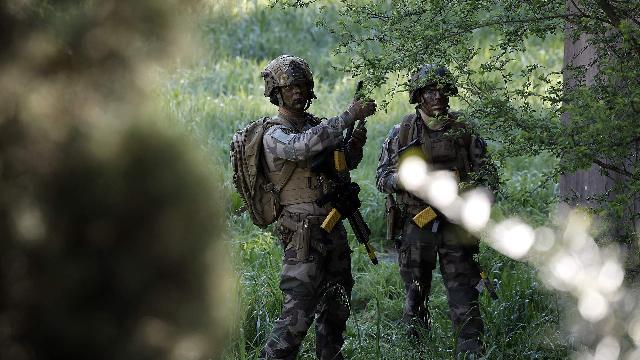The French unit was created based on the study of the combat experience of the Ukrainian and other modern conflicts.
France has created the first drone reconnaissance and strike unit in its army, which will replace a squadron of wheeled tanks. This became known at the international NATO exercises Hedgehog 25, where the French Marines demonstrated a new company for the first time. So far, only two platoons have been shown, but it is already clear that the French army, after analyzing the tactics of recent conflicts, has created its own concept of a UAV unit, which consists of five platoons: control, reconnaissance, barrage ammunition and two "direct action" platoons.
New structure and tactics
At the Hedgehog 25 international exercises, the French military demonstrated the first full-time reconnaissance and strike company of UAVs. Information about this appeared in a number of foreign media. The unit, formed on the basis of the 1st Marine Regiment (1RIMA), operated as part of a tactical group and, according to preliminary data, inflicted up to 20% of losses on the imaginary enemy. And this is without taking into account the data collected during the exploration. So far, only two platoons have been shown, but information about the approximate composition of the unit and its possible development has already appeared in specialized publications.
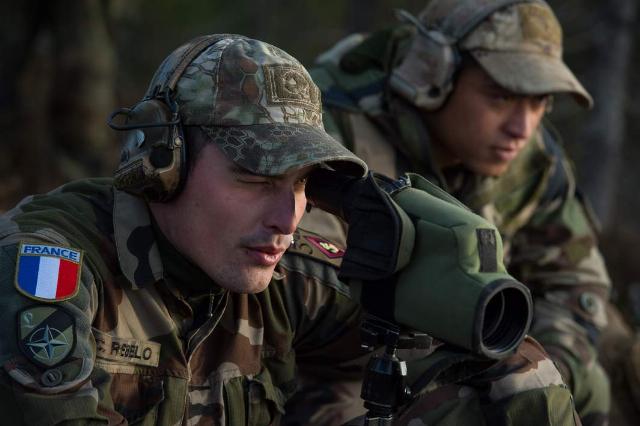
Photo: Global Look Press/Sgt Marc-Andre Gaudreault
Image source: iz.ru
It can be assumed that Ukrainian militants who have extensive experience in controlling UAVs in combat conditions were involved in the training of French FPV drone operators. Earlier, Izvestia wrote that the experience gained by the Ukrainian Armed Forces is gradually spreading around the world, both on the initiative of the Kiev regime itself and uncontrollably.
The 1RIMA squadron, despite its formal status as a Marine regiment, has always been an armored cavalry unit. His forces on AMX10 light wheeled tanks were intended to support infantry or were part of tactical groups. It is important to note that the French army has a special structure focused on expeditionary operations, so its organizational units do not always correspond to tactical ones.
The new type of unit consists of five platoons: command, reconnaissance, barrage ammunition and two "direct action" platoons. This new structure marks the transition to more flexible and modern combat tactics, where drones play a key role in both reconnaissance and strikes.
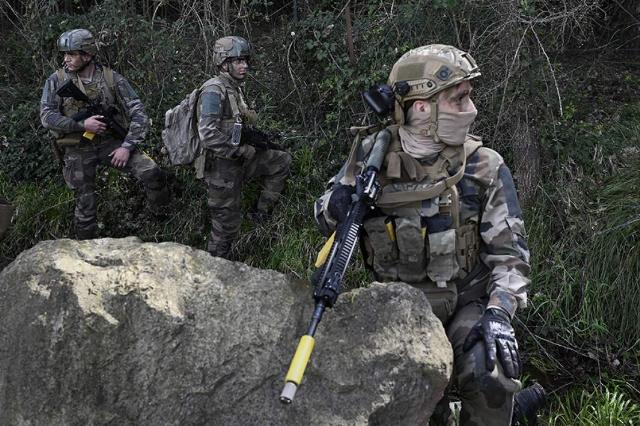
Photo: TASS/SEBASTIEN NOGIER
Image source: iz.ru
The management platoon of the new company solves the tasks of command and logistics. He uses jeeps and trucks for logistics and headquarters operations. In addition, he has at his disposal a calculation of a reconnaissance unmanned aerial vehicle, which the company commander can use to obtain up-to-date data on the situation on the front line.
The reconnaissance platoon consists of three divisions, each armed with one aircraft-type drone. The division is currently using the eBee Vision model, a portable device that, after assembly, can travel up to 20 km and monitor using a thermal imaging camera.
In theory, three drones should provide constant monitoring in the area of responsibility, but in practice this is not always possible. Breakdowns, losses, and the time it takes to change devices make round-the-clock surveillance unlikely. For this reason, it is planned to increase the number of drones to six. This configuration corresponds to the number of vehicles and the number of personnel in the departments.
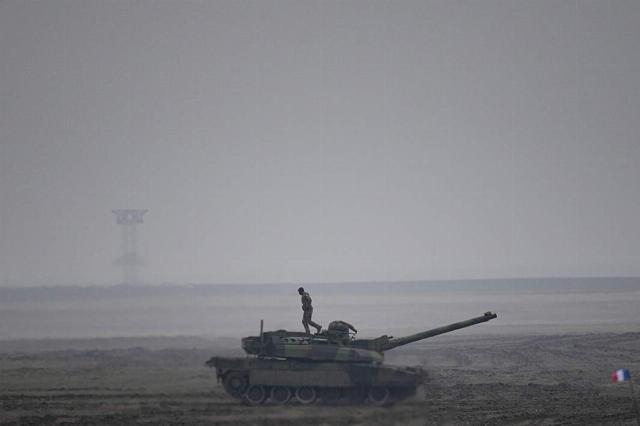
Photo: TASS/Vadim Ghirda
Image source: iz.ru
There is the least information about a platoon equipped with barrage ammunition. It is similar in structure to an intelligence unit: three branches, each with two Jeeps and six to eight people. However, since this unit was not shown in the exercises, its arsenal is still unknown.
Among the drones in service with France, the MV-25 Oskar is suitable for this role. They are capable of operating at a range of up to 30 km, stay in the air for up to 45 minutes and carry a warhead weighing 550 grams. However, it is possible that this platoon was created with an eye to the development of the American LASSO barrage ammunition program or their European counterparts. Also in the future, the unit may receive multiple launch rocket launchers for swarms of drones, which are currently being developed.
The main striking force
In modern warfare, when the priority is to quickly and accurately defeat targets, small-sized drones are playing an increasingly important role. After analyzing the tactics of recent conflicts, the French army assigned the main firepower to the so-called direct contact platoons. This strike force is equipped with pickups with two vertical launch containers, each of which accommodates up to ten quadrocopters. The number of such containers is likely to be increased to five, and the pickups themselves can be replaced with armored vehicles, as vertical launchers are ideal for such vehicles. Each department consists of two calculations on two machines. In addition to quadrocopters, platoons also use kamikaze FPV drones, although their specific models and number are still unknown.
The main drone is the Parrot Anafi quadcopter, capable of both reconnaissance and dropping ammunition. For the rapid deployment of drones, a quasi-swarm tactic is used: one operator controls ten drones at once. The degree of their automation is enhanced by automatically capturing the target and aiming to drop the bomb. However, there are no full-fledged internal communications or transfer of tasks between drones in such a quasi-swarm.
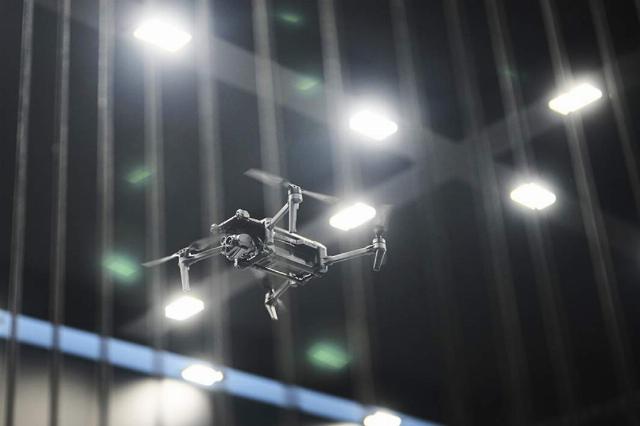
Photo: TASS/Thibault Camus
Image source: iz.ru
Obviously, France has carefully studied both the experience of fighting in Ukraine and the tactics of using small UAVs in an attack on Israel. At the same time, the French approach differs from what is being experimented with in the United States. Americans rely on integrated units that combine ground-based unmanned platforms, various types of UAVs, and even robotic dogs.
One of the strengths of the French company is versatility. The equipment is mobile, it can be transported on any transport, used in foot operations, and the launch containers are quickly removed and camouflaged on the ground. A large number of small drones provides flexibility of use: they can be used for both reconnaissance and fire damage within a radius of up to 10 km.
Vulnerabilities and prospects
In modern military conflicts, including the Ukrainian one, electronic warfare (EW) has become the main challenge for units using drones.
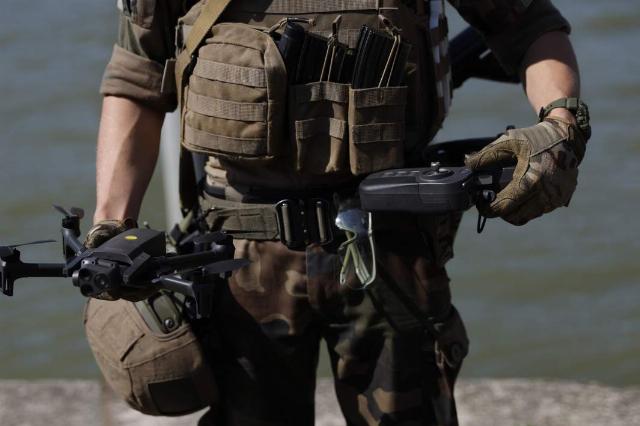
Photo: AP Photo/Aurelien Morissard
Image source: iz.ru
Although the French apparently use satellite Internet to transmit intelligence and communication between platoons (as evidenced by the video from the exercises), the most vulnerable link remains the connection between the operator and the drone. One of the solutions to this problem is the use of FPV drones and frequency changes, and individual cases of their use have already been captured on video. However, their place in the overall concept remains unclear. Another possible way to counter electronic warfare — the use of fiber—optic-controlled drones - has not yet been shown at all during the exercises.
The main issue of the effectiveness of the French company lies not so much in the general concept as in the characteristics of the massive quadcopter that forms the basis of the unit. It is impossible to determine from open sources whether he has military versions of the software and how effective they are. It is also unclear whether the French encountered electronic warfare counteraction during the exercises and how strong it was.
Switching to FPV drones, in turn, may destroy the concept of mass launch and quasi-swarm, since each drone will need a separate operator. There are currently no more than four of them in the department, although an increase to six is possible in the future. This scenario is probably already being considered by the French, and they are planning to expand their staff.
Dmitry Astrakhan
